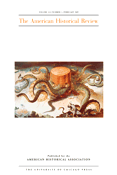-
Views
-
Cite
Cite
Paul S. Sutter, Matthew Klingle. Emerald City: An Environmental History of Seattle. (The Lemar Series in Western History.) New Haven: Yale University Press. 2007. Pp. xix, 344. $30.00, The American Historical Review, Volume 114, Issue 1, February 2009, Pages 173–174, https://doi.org/10.1086/ahr.114.1.173-a
Close - Share Icon Share
Extract
If the United States of America is “nature's nation,” then Seattle is a top contender to be “nature's city.” Located on an isthmus between Lake Washington and Puget Sound and lying within the shadow (when the sun breaks through) of Mount Rainier, Seattle has a reputation for being a lifestyle environmentalist's paradise, an “emerald city”—to invoke one of the city's marketing slogans—set in a natural region. That perception is both the subject and the foil for Matthew Klingle in his excellent new study. Combining urban and environmental methodologies and questions, Klingle makes two big points about Seattle's history. First, he emphasizes how constructed the city is: how much bodily and mechanical work has gone into transforming the Seattle landscape over the course of more than a century, as well as how much cultural work went into the city's modern image. Second, and of more consequence, Klingle argues that all of this work had not only dramatic environmental consequences but profound social ones as well, particularly for Seattle's most marginal residents.





